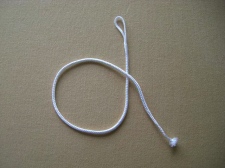
Neil Young, talking to his biographer Jimmy McDonough, divides the musical world into two poles. It’s a way for him to put aside distraction and focus on what he sees as important about the music.
“So I’d taken rock and roll and divided it into two categories. Rolling Stones and Beatles, okay? And I realized that if you divided into those two categories, color makes no difference, what part of the world made no difference. Beatles are on one side, Rolling Stones are on the other side, everybody else line up, okay? Crazy Horse and the Mynah Birds, they were on the Rolling Stones side.
–Buffalo Springfield were the Beatles?
Yup.
–CSNY?
Beatles
When you get to the “the take�? the moment when you know you’ve got the right, not just the best, but the right performance of a composition or a piece of music– it’s either loose like the Stones, or tight like the Beatles. Young puts all popular music into one category or the other. It’s a tool he uses to understand both music and the openings and possibilities within the process of making music.
But let’s step back from the categories, and look at the moment when things are still unformed and fragmentary. The small pieces that are not yet joined, loosely or otherwise into a categorizable finished piece. The fragments are identified, collected, iterated — put together in different ways, explored forwards and backwards, different styles are layered on until something solid emerges, or it doesn’t. Or perhaps it doesn’t at that moment at time, and it’s stashed away for later.
The perfect take hides the alternate universes that the moment is built upon. Before the world is divided into Neil Young’s two categories– the bits and pieces any artist plays with look very similar. It’s the process taking those pieces and connecting them up, running them through your filters that makes the finished work. Identical raw materials could result in diametrically opposed outcomes.
The shards of glass, the pieces of broken pottery, the phrase, the scraps of paper, the image, the reference– these are all pieces that go into the final product. Sometimes they’re visible and shine through in the end. Sometimes they’re invisible, a starting point left somewhere down the road.
This brings us to the idea of bricolage, we make new things from the things we collect from our environment. We carry with us a mistaken idea of creativity– a divine creating out of nothingness, new things emerging fully formed without history or context. As Wittgenstein might say, if such a thing could happen, we couldn’t understand it.
Bricolage refers to:
▪ the construction or creation of a work from a diverse range of things which happen to be available;
▪ a work created by such a process.
It is borrowed from the French word bricolage, from the verb bricoler – the core meaning in French being, “fiddle, tinker” and, by extension, “make creative and resourceful use of whatever materials are to hand (regardless of their original purpose).”
On the Network there are a lot of ways of collecting and consuming items of information. Twitter, FriendFeed and RSS subscriptions offer a raging stream of roughly filtered items for our consumption. But that’s the old model, the conveyor belt of tasty treats moving endlessly and efficiently toward our collective gaping maws. The restauranteurs of the machine of popular culture want to teach us to eat faster.
I’ve just started integrating a software application called Scrivener into my writing practice. There are a number of possible writing workflows that can be built with Scrivener– but the one that currently interests me has to do with the structure of the application’s document format. Each document is comprised of two sets of outlines: a research outline and a draft outline. The draft outline is for composing text using an outliner approach, fragments of text can be arranged, rearranged and put into hierarchies. The research outline is for collecting raw material, which can be text, web pages, quicktime files, images, audio– anything that might serve in the writing process. In my system of categories they’re called the raw and the cooked.
These days when we talk about the two-way web, we understand very little about the writing part. We’re obsessed with creating a manageable and consumable stream of information. The latest manifestation of this is the dream of the perfect dashboard with a blinking readout and summary of our online digital existence.
But one might ask, once these digital information items have been consumed and digested– what’s next? Are those selections and collections we’ve made the raw material for building something new, or are they ‘used up’ once they are consumed and partially digested– routed to the sewage treatment plants running continuously in the river of our unconscious minds?
To close the loop, the reading tools have to be connected to the writing tools. To create my research outline in Scrivener, I have to copy and paste the things I find into it. The application isn’t connected to the Network, it doesn’t have an inbox listening for items I might like to route to it. The closest thing we have to this kind of application today is Gmail, an editorial application disguised as an email tool.
I can hear the loud objections already. Not everyone needs to be able to write. Writing should be left to the professionals. And then comes the vigorous pointing to the power law curve showing participation rates in two-way systems. The only point here is if you give everyone access to two guitars, a bass and some drums, something good is bound to come out of it. Music isn’t just for listening. And remember, as music can stand in for writing, writing can stand for the research you do before a purchase or some other kind of transaction. Doc Searls might call it VRM.
5 Comments

